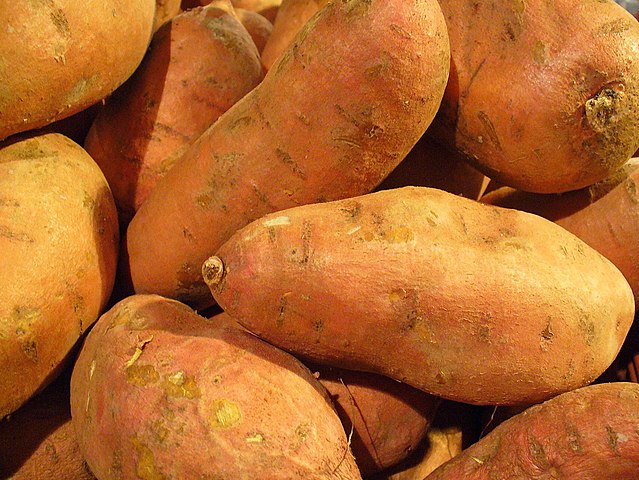Growing sweet potatoes in your backyard can be a rewarding and nutritious endeavor. Sweet potatoes are not only delicious, but they are also rich in vitamins, minerals, and dietary fiber. Here’s the ultimate guide to help you successfully grow sweet potatoes in your own backyard:
1. Choosing Sweet Potato Varieties:
- There are several sweet potato varieties to choose from, including Beauregard, Covington, and Jewel. Select a variety that suits your climate and taste preferences.

2. Preparing the Soil:
- Sweet potatoes prefer well-drained, loose soil with a slightly acidic pH (around 5.8 to 6.2).
- Clear the area of weeds and debris and ensure good sunlight exposure.
3. Starting Slips:
- Sweet potatoes are typically grown from “slips,” which are sprouts or shoots. You can purchase slips or create your own by submerging the base of a sweet potato in water until slips form.
4. Planting Slips:
- Plant your slips in warm soil, as sweet potatoes are tropical plants. Wait until the danger of frost has passed and soil temperatures are consistently above 50°F (10°C).
- Create rows about 3 feet apart, with slips spaced 12-18 inches apart within the rows.
5. Care and Maintenance:
- Keep the soil consistently moist but not waterlogged.
- Mulch can help conserve moisture and suppress weeds.
- Sweet potato vines are vigorous and can become invasive, so you may need to prune them to keep them under control.
- Consider providing a trellis or support for the vines to grow vertically to save space and reduce the risk of pest and disease issues.
6. Fertilization:
- Sweet potatoes benefit from a balanced fertilizer. Add a complete fertilizer with a moderate amount of nitrogen (e.g., 8-8-8 or 10-20-20) at planting and during the growing season.
7. Pest and Disease Management:
- Keep an eye out for common pests like sweet potato weevils and aphids. Use organic or chemical methods as necessary.
- Protect your sweet potatoes from fungal diseases like Fusarium wilt by practicing crop rotation and ensuring proper drainage.
8. Harvesting:
- Sweet potatoes are usually ready for harvest in 90-170 days, depending on the variety and growing conditions. Harvest after the foliage has fully matured and started to yellow, typically in the fall.
- Be gentle when harvesting to avoid damaging the roots.
9. Curing and Storage:
- Cure sweet potatoes by keeping them in a warm, humid place (80-85°F or 27-29°C) for about 10-14 days. This process helps improve their sweetness and storage life.
- Store sweet potatoes in a cool, dry, and dark place with good ventilation.
10. Enjoy Your Sweet Potatoes:
- Sweet potatoes can be used in a variety of dishes, from casseroles and pies to simply roasting or mashing. Their sweet and earthy flavor is versatile and delicious.
Growing sweet potatoes requires a bit of patience and attention, but the rewards are worth it. You can enjoy homegrown, nutritious sweet potatoes straight from your own backyard garden.











